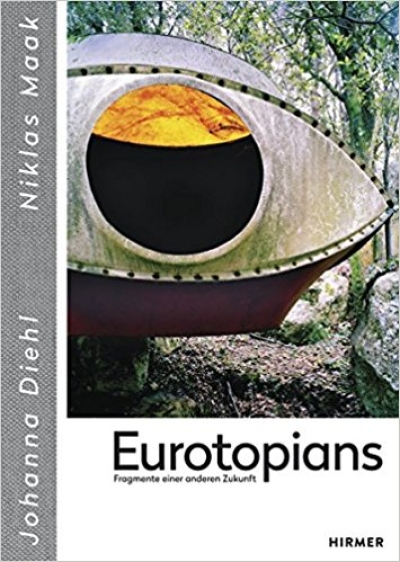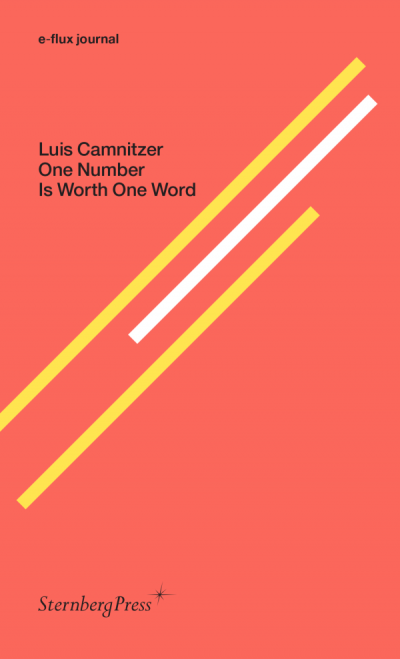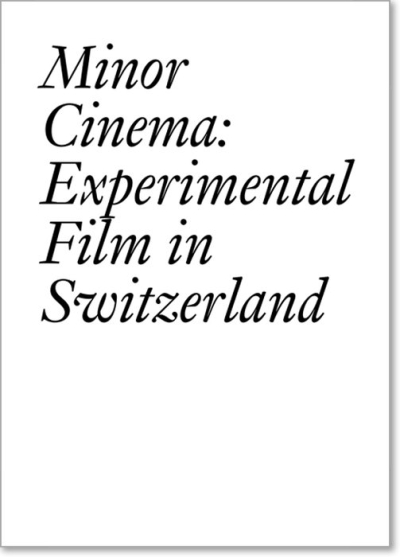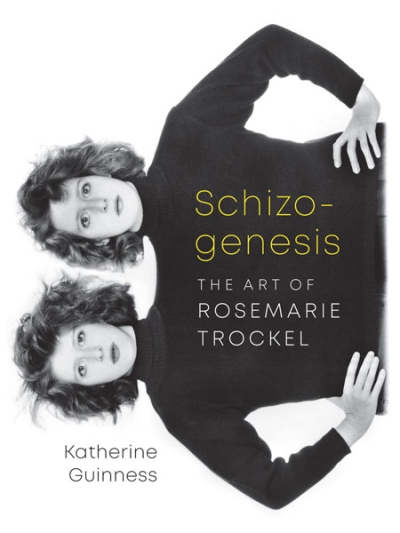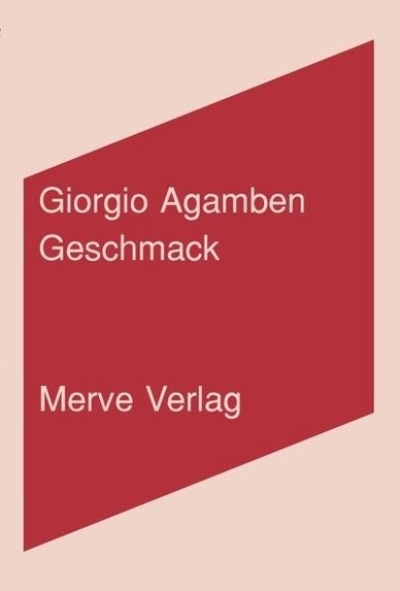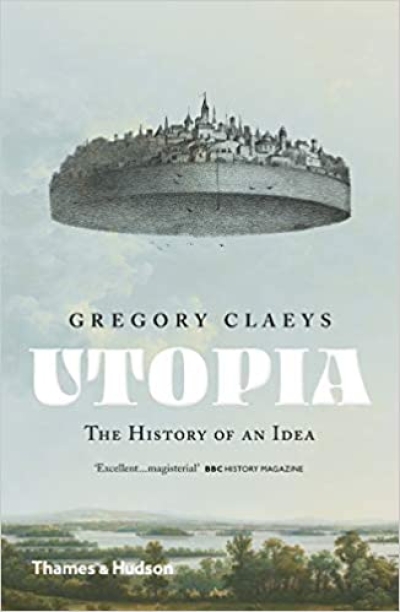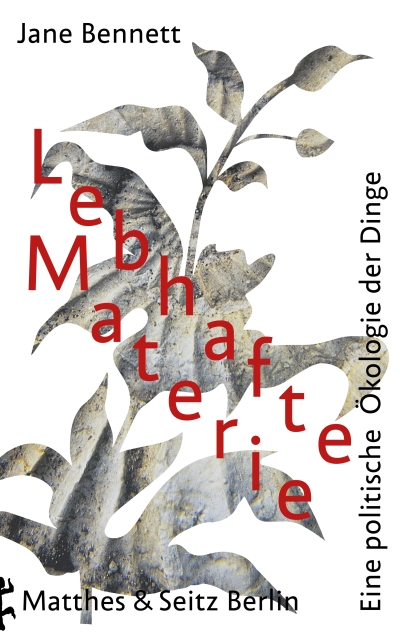Ursula K. Le Guin
The Carrier Bag Theory of Fiction
Ben Eastham (Ed.)
Luis Camnitzer. One Number Is Worth One Word
John Beck, Ryan Bishop
Technocrats of the Imagination. Art, Technology, and the…
Louise Amoore
Cloud Ethics. Algorithms and the Attributes of Ourselves…
David Grubbs
The Voice in the Headphones
Hertz-Labor Hg. (Peter Weibel, Ludger…
From Xenakis’s UPIC to Graphic Notation Today
Cyril Veillon, Nadja Maillard (Eds.)
Isle of Models. Architecture and Scale
Giorgio Agamben
Der Gebrauch der Körper
Isabelle Graw
In einer anderen Welt. Notizen 2014-2017
Sabine Hark, Paula-Irene Villa
The Future of Difference. Beyond the Toxic Entanglement of…
Adeena Mey, Anton Rey, François Bovier…
Minor Cinema. Experimental Film in Switzerland
Max Haiven
Revenge Capitalism. The Ghosts of Empire, the Demons of…
Data Chigholashvili, Nini…
Tbilisi - It's Complicated. Onomatopee 173
Isa Genzken
Isa Genzken. I Love New York, Crazy City
Raul Zelik
Wir Untoten des Kapitals. Über politische Monster und einen…
Danielle Allen
Politische Gleichheit
Silvia Henke, Dieter Mersch, Thomas…
Manifest der künstlerischen Forschung / Manifesto of…
Dominique Hauderowicz, Kristian Ly…
Age-Inclusive Public Space
Christian Werner
Christian Werner. Everything Is So Democratic and Cool
Paulo Mendes da Rocha
Designed Future or selected writings by Paulo Mendes da…
Moyra Davey
Index Cards
Emanuele Coccia
Sinnenleben
ARCH+, Anh-Linh Ngo, Arno Brandlhuber,…
Arch+. The Property Issue: Politics of Space and Data.
Philip Kovce, Birger P. Priddat (Hg.)
Bedingungsloses Grundeinkommen. Grundlagentexte
Aaron Bastani
Fully Automated Luxury Communism
Martijn De Rijk, Thomas Spijkerman
Reinventing Daily Life
Adriano Pedrosa, Jose Esparza Chong Cuy…
Lina Bo Bardi. Habitat
Cloe Pitiot, Nina Stritzler-Levine (Hg)
Eileen Gray. Designer and Architect
Verena Pfeiffer-Kloss
Der Himmel unter West-Berlin. Die post-sachlichen U-…
Chus Martínez (Ed.)
The Wild Book of Inventions
Mary Bosworth, Khadija von Zinnenburg…
Bordered Lives. Immigration Detention Archive
bell hooks
Die Bedeutung von Klasse
Marcus Steinweg
Metaphysik der Leere
Jeppe Ugelvig
Fashion Work. 1993-2018. 25 Years of Art in Fashion
Ursula K. Le Guin
Am Anfang war der Beutel
Franco La Cecla
Against Urbanism
John Maeda
How to Speak Machine. Laws of Design for a Computational Age
Holger Schulze
Sonic Fiction
Chad Randl
A-Frame
Christopher M. Kelty
The Participant. A Century of Participation in Four Stories
Kevin Lotery
The Long Front of Culture. The Independent Group and…
Matthew Gandy, Sandra Jasper (Hg)
The Botanical City
Riccardo Badano, Rebecca Lewin, Natalia…
Formafantasma Cambio
Rozemin Keshvani (Ed.)
The Locked Room. Four Years that Shook Art Education, 1969–…
Nick Mauss
Transmissions
Stanislaus von Moos, Martino Stierli
Eyes That Saw: Architecture after Las Vegas
S. Delz, R. Hehl, P. Ventura
Housing the Co-op. A Micro-political Manifesto
Sasha Costanza-Chock
Design Justice. Community-led Practices to build the Worlds…
Mary Kaldor and Saskia Sassen (Ed)
Cities at War. Global Insecurity and Urban Resistance
Claire Fontaine
La Grève Humaine et l’art de créer la liberté
Christian Nae (Editor)
Dan Mihaltianu. Canal Grande: The Capital Pool and the…
Hashim Sarkis, Roi Salgueiro Barrio,…
The World as an Architectural Project.
Pier Vittorio Aureli (Hg)
The City as a Project
Stephen Barber
The Projectionists. Eadweard Muybridge and the Future…
Zoran Terzić
Idiocracy. Denken und Handeln im Zeitalter des Idioten
Paul B. Preciado
Ein Apartment auf dem Uranus. Chroniken eines Übergangs
Corinna Burkhart, Matthias Schmelzer,…
Degrowth in Movement(s). Exploring Pathways for…
Anita Chari, Claire Fontaine, Jaleh…
Claire Fontaine. Newsfloor
Angela McRobbie
Feminism and the Politics of Resilience. Essays on Gender,…
Gabriele Klein
Pina Bausch’s Dance Theater. Company, Artistic Practices,…
Joachim Hamou, Maija Rudovska, Barbara…
Active Art
Institut für Raumexperimente e.V.,…
Poetry Jazz: Wax and Gold
Larry D. Busbea
The Responsive Environment. Design, Aesthetics, and the…
Katherine Guinness
Schizogenesis. The Art of Rosemarie Trockel
Giorgio Agamben
Geschmack
Alain Badiou
Migrants and Militants
Gregory Claeys
Utopia. The History of an Idea
Frieda Grafe
HaFI 011: Souvenirs, Ursprünge, Gefundene Fiktion /…
Etel Adnan
Wir wurden kosmisch
D. R. McElroy
Signs & Symbols of the World: Over 1,001 Visual Signs…
David Yaffe
Joni Mitchell - Ein Porträt
Gloria Meynen
Inseln und Meere. Zur Geschichte und Geografie fluider…
Leander Scholz
Die Menge der Menschen
Jakob Hayner
Warum Theater
Sylvia Lavin
Architecture Itself and Other Postmodernist Myths
Alastair Hemmens, Gabriel Zacarias (Eds…
The Situationist International. A Critical Handbook
Claudia Mareis, Michael Rottmann
Entwerfen mit System
James Lovelock
Novozän: Das kommende Zeitalter der Hyperintelligenz
Jane Bennett
Lebhafte Materie. Eine politische Ökologie der Dinge
Naomi Hennig, Anna-Lena Wenzel (Hg.)
General Public 2005-2015
Holger Schulze
Ubiquitäre Literatur. Eine Partikelpoetik
Tom Bieling (Hg.)
Gender (&) Design. Positionen zur Vergeschlechtlichung…
Oliver Flügel-Martinsen
Radikale Demokratietheorien zur Einführung
Simon Rothöhler
Theorien der Serie zur Einführung
Eugene Thacker
Im Staub dieses Planeten: Horror der Philosophie
Peter Wilson
Some Reasons For Traveling To Albania
Ulrich Bröckling
Postheroische Helden. Ein Zeitbild
Hubertus Butin
Kunstfälschung. Das betrügliche Objekt der Begierde
Deborah Potts
Broken Cities. Inside the Global Housing Crisis
Günther Vogt, Thomas Kissling (Hg.)
Mutation und Morphose. Landschaft als Aggregat
Markus Miessen, Zoë Ritts (Hg.)
Para-Plattformen. Die Raumpolitik des Rechtspopulismus
Fischer, Gramelsberger, Hoffmann,…
Datennaturen. Ein Gespräch zwischen Biologie, Kunst,…
Ludger Weß, Judith Schalansky (Hg.)
Winzig, zäh und zahlreich. Ein Bakterienatlas
Felwine Sarr
Afrotopia
Anna-Lisa Dieter, Viktoria Krason (Hg.)
Future Food. Essen für die Welt von Morgen
Florian Malzacher
Gesellschaftsspiele. Politisches Theater heute
HfG-Archiv Museum Ulm, Katharina Kurz,…
Nicht mein Ding − Gender im Design
Clog
Clog 17. Cannabis
